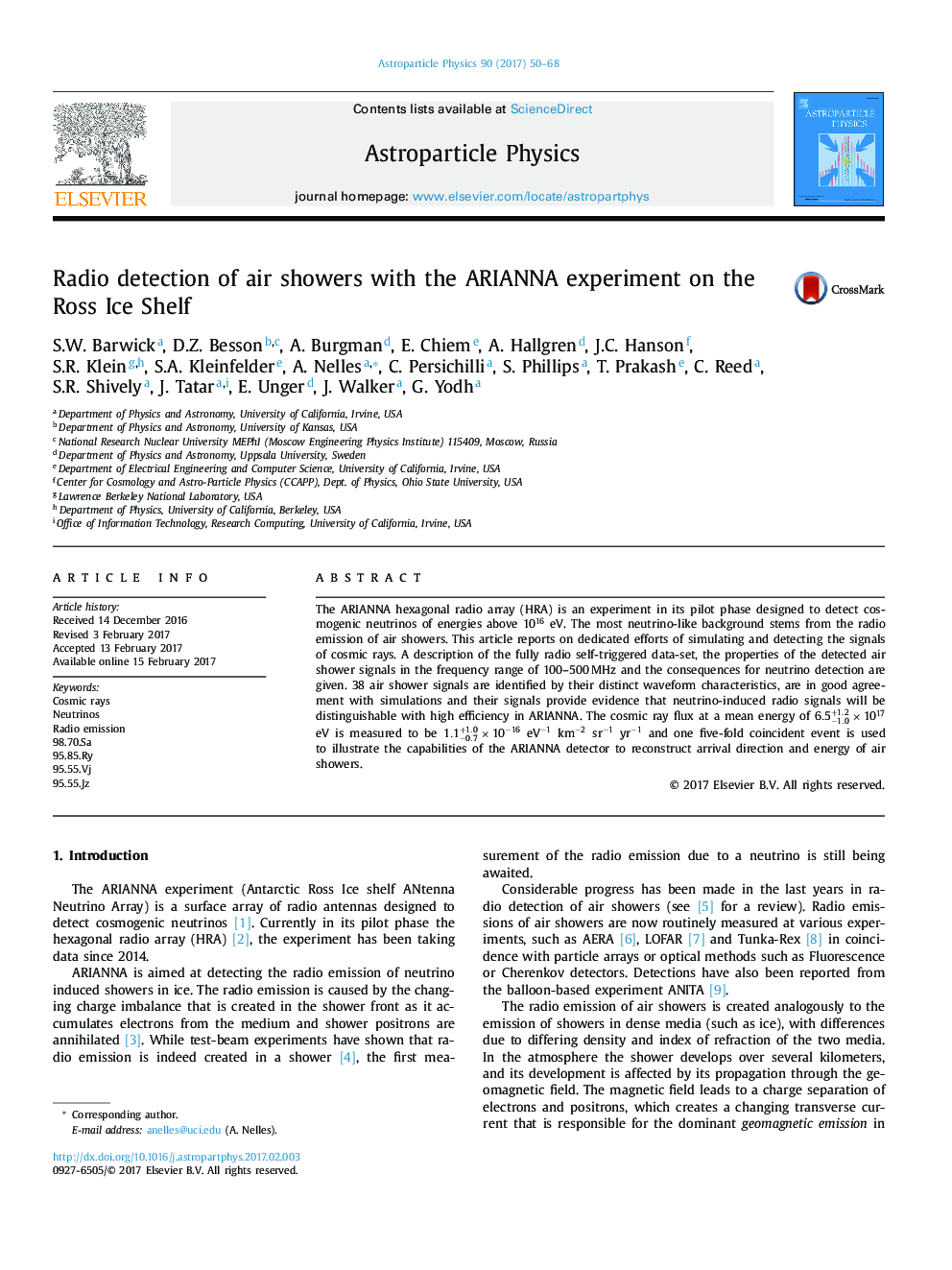| Article ID | Journal | Published Year | Pages | File Type |
|---|---|---|---|---|
| 5486721 | Astroparticle Physics | 2017 | 19 Pages |
Abstract
The ARIANNA hexagonal radio array (HRA) is an experiment in its pilot phase designed to detect cosmogenic neutrinos of energies above 1016 eV. The most neutrino-like background stems from the radio emission of air showers. This article reports on dedicated efforts of simulating and detecting the signals of cosmic rays. A description of the fully radio self-triggered data-set, the properties of the detected air shower signals in the frequency range of 100-500âMHz and the consequences for neutrino detection are given. 38 air shower signals are identified by their distinct waveform characteristics, are in good agreement with simulations and their signals provide evidence that neutrino-induced radio signals will be distinguishable with high efficiency in ARIANNA. The cosmic ray flux at a mean energy of 6.5â1.0+1.2Ã1017 eV is measured to be 1.1â0.7+1.0Ã10â16 eVâ1 kmâ2 srâ1 yrâ1 and one five-fold coincident event is used to illustrate the capabilities of the ARIANNA detector to reconstruct arrival direction and energy of air showers.
Related Topics
Physical Sciences and Engineering
Physics and Astronomy
Astronomy and Astrophysics
Authors
S.W. Barwick, D.Z. Besson, A. Burgman, E. Chiem, A. Hallgren, J.C. Hanson, S.R. Klein, S.A. Kleinfelder, A. Nelles, C. Persichilli, S. Phillips, T. Prakash, C. Reed, S.R. Shively, J. Tatar, E. Unger, J. Walker, G. Yodh,
